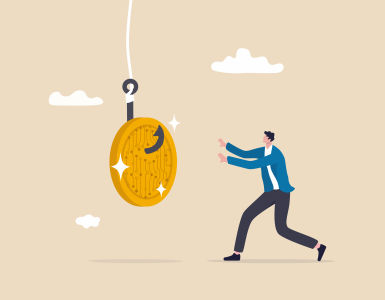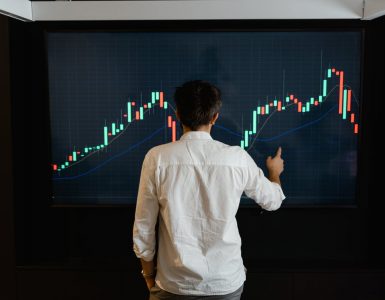LATOKEN specialists have written more than once about crypto scams and various schemes to steal cryptocurrency. Today we will talk about anonymity on the network and who and how monitors the movement of cryptocurrencies. Yes, that’s right; it is directly related to crypto scams.
According to Chainalysis, back in 2019, the volume of cryptocurrency involved in illegal transactions tripled and almost reached $12 billion.
Digital currencies attract users with their anonymity. It is still possible to make payments here without disclosing full information about the participants in the transaction. No wonder scammers take advantage of this.
So, the most profitable type of crime in the cryptocurrency segment is scams: users are deceived and misled to steal their cryptocurrency. According to Chainalysis, scammers received about $4,3 billion over the past year.
Slightly less damage is caused by theft from crypto accounts. Over the past three years, hackers have stolen about $10 billion in cryptocurrency. Even experienced and significant players are not immune from such thefts. For example, the Bitfinex exchange still cannot find the hackers who stole 120 thousand BTC from the site back in 2016.
In addition, cryptocurrencies are used to finance terrorist groups and transfer funds to the darknet. In the summer of 2020, the US intelligence services stopped several terrorist financing campaigns at once, seizing $1 million in cryptocurrency. And in the first quarter, $411 million was sent to the darknet with the help of bitcoins, and what is more, indicators continue to grow.
Many experts associate this with the increase in the bitcoin rate and its popularity in the hidden network, and the lack of clear procedures for verifying clients on cryptocurrency platforms.
Many blockchains are truly transparent. Users know the transaction IDs, recipient addresses, and the number of funds transferred. But more detailed information about the counterparties themselves or the risk is not available. It is not known whether the funds were used, for example, to finance terrorism, buy drugs, or sanction-busting.
The state, represented by regulators or law enforcement officers, also does not see the participants in the translations and does not understand who to prosecute in case of offenses. Therefore, it considers all digital sites to be suspicious by default.
Anonymity is a threat
The main way to protect yourself from scammers and reduce damage is to get rid of anonymity. To do this, financial institutions use the Know Your Customer (KYC) policy. She suggests that you need to establish the identity of customers before doing anything with their money. The company must ensure that users or their payments are not related to money laundering, financing crime, or paying taxes.
The basic list of identifiers includes confirmation of identity and finding out where the client got the funds. If doubts arise during the check, the company might set a limit on transactions or even refuse the whole service.
For a long time, cryptocurrency companies did not consider the KYC policy to be mandatory. But every year, the requirements of regulators are becoming more stringent.
In particular, in Europe, cryptocurrency platforms are subject to EU anti-money laundering directives. They are required to register, report to supervisory authorities and strictly follow the KYC rules. Similar requirements apply in South Korea, Canada, Japan, Mexico, and Switzerland.
CipherTrace notes that the volume of criminal funds that are sent directly to or from exchanges is decreasing. Experts explain this by tightening measures to combat money laundering. As a result, there is a growing number of gray transactions involving darknet sites and mixers (anonymization services), which complicate tracking funds and transactions.
For example, the North Korean group Lazarus initially cashed stolen assets through exchanges with a weak level of customer verification. But last year, hackers started using “mixers” and CoinJoin technology, which also helps anonymize transactions.
Real-time analytics
The resources of regulators and exchanges are often insufficient to obtain all the necessary data on users and operations. It is required to use tools for monitoring crypto transactions in real-time and to know the source of funds and how customers spend them.
As a rule, such tasks are solved by specialized teams working in the crypto compliance field.
Usually, analytical blockchain companies do not have personal user data, but they know where to send an official request to receive it. This can be compared to open access to the databases of all central banks and company registries. The amount of such information exceeds the resources of traditional financial compliance.
If banks see only the main transfer route — where the money came from and where it went, then specialized platforms have wider opportunities. You can study the history of financial flows for each client: how the funds were received, where and on what they were spent, who exactly is the counterparty.
Private and public
Some states are ready to attract private businesses to make digital assets more transparent. So, in early 2020, the UK tax office was looking for a contractor who would provide tools for analyzing cryptocurrency transactions for tax evasion and money laundering.
Among the possible contenders, the media named the compliance platform Elliptic. This platform already has experience working with the IRS: the company is involved in investigating cybercrime in the field of taxation.
In turn, Chainalysis cooperates with Europol and US law enforcement agencies. It has recently helped the FBI find a hacker who hacked the Twitter accounts of famous business people, politicians, and celebrities to advertise a bitcoin scam.
However, it is still worth noting that the transparency of the cryptocurrency market is increasing. Eight years ago, the share of transactions implicated in crime was about 40%. By 2014, it had dropped sharply to 5% and has hovered around 1% in the last couple of years.
About LATOKEN
- Ranked #2 worldwide in the startup tokens primary market with 220+ IEO’s since 2017.
- Has over 2 mln registered users, over 1 mln Android app installs.
- Is in the TOP 10 of CoinGecko rank by the amount of token pairs and coins listed.
- VCTV, a live streaming panel with high-profile industry leaders, produced over 500 shows to advise traders and investors how to navigate the crypto world with discussions, news updates, and interviews.
- Advisory Board includes former CFOs from JP Morgan and Paypal.
Follow LATOKEN on social media to keep up with the latest news, and more!👇
✅ Website
✅ YouTube
LATOKEN crypto exchange does not provide any investment, tax, legal, or accounting advice. This article is written for informational purposes only. Like other assets, cryptocurrency is subject to market risk. Please do your own research and trade with caution.





















